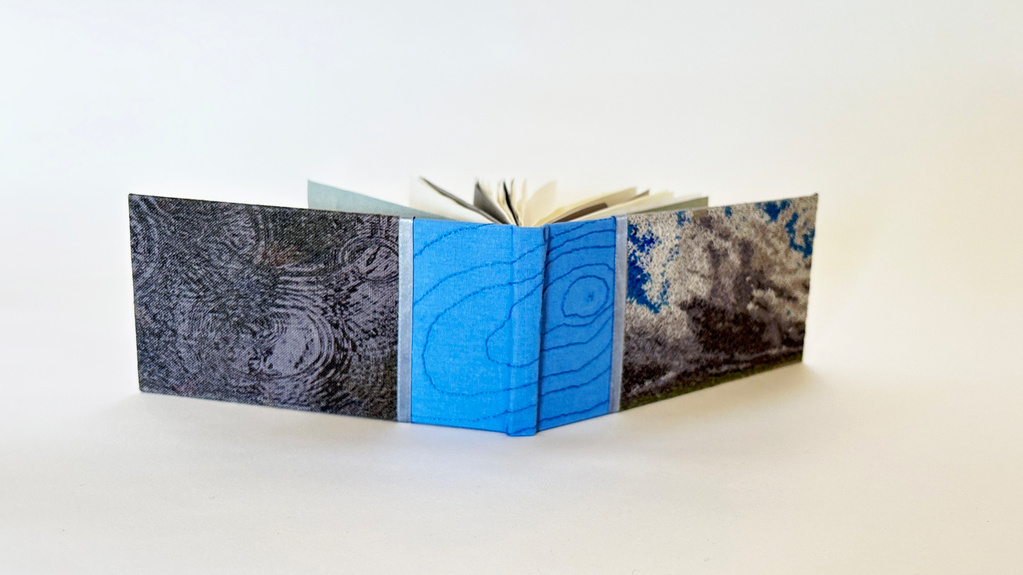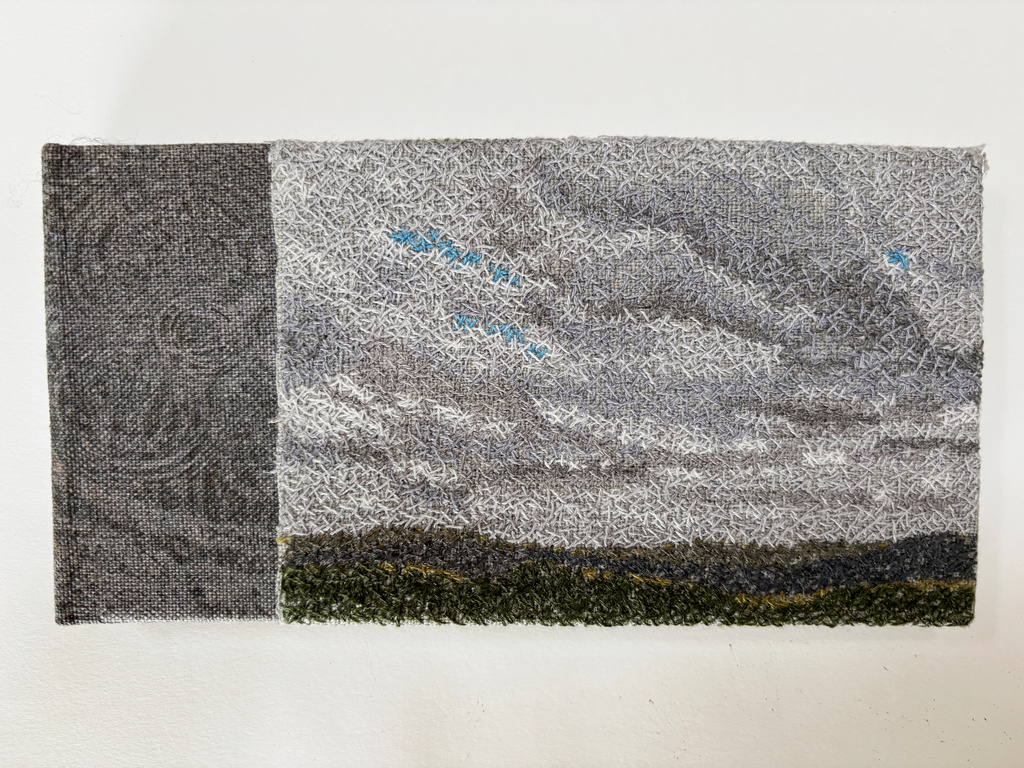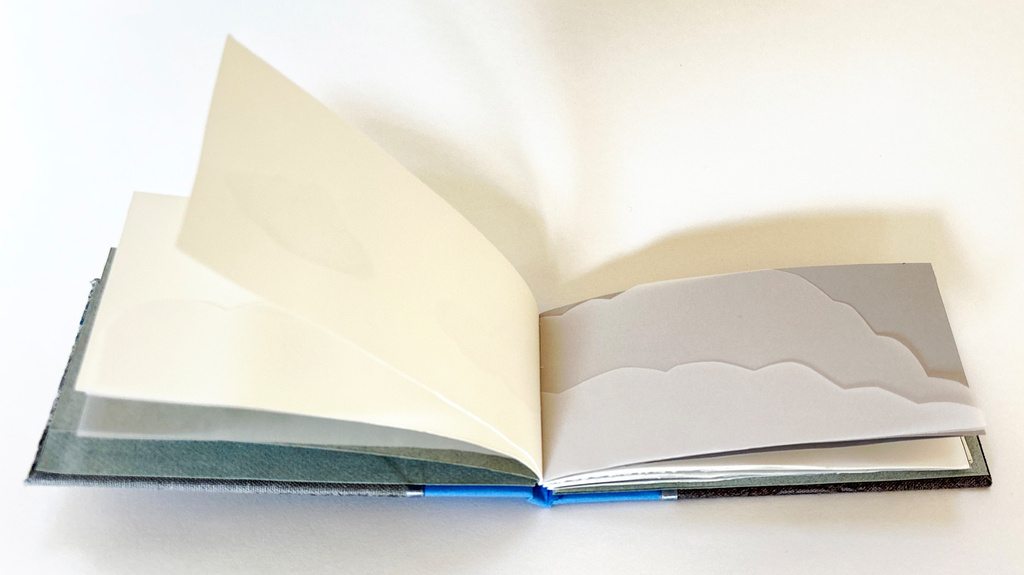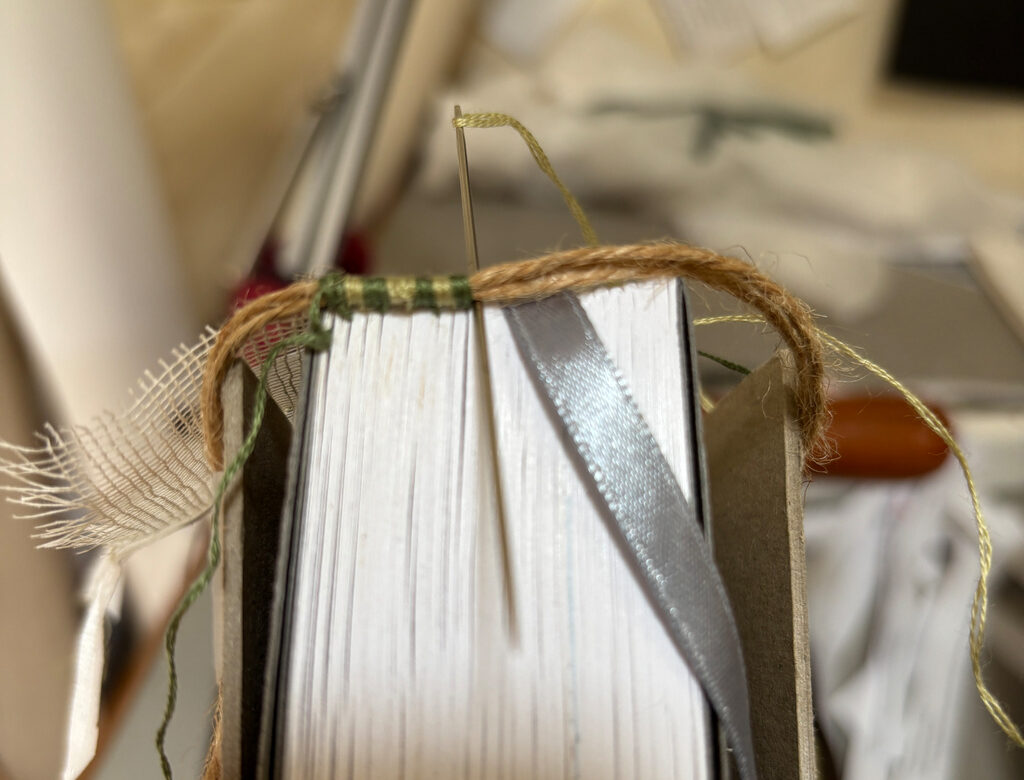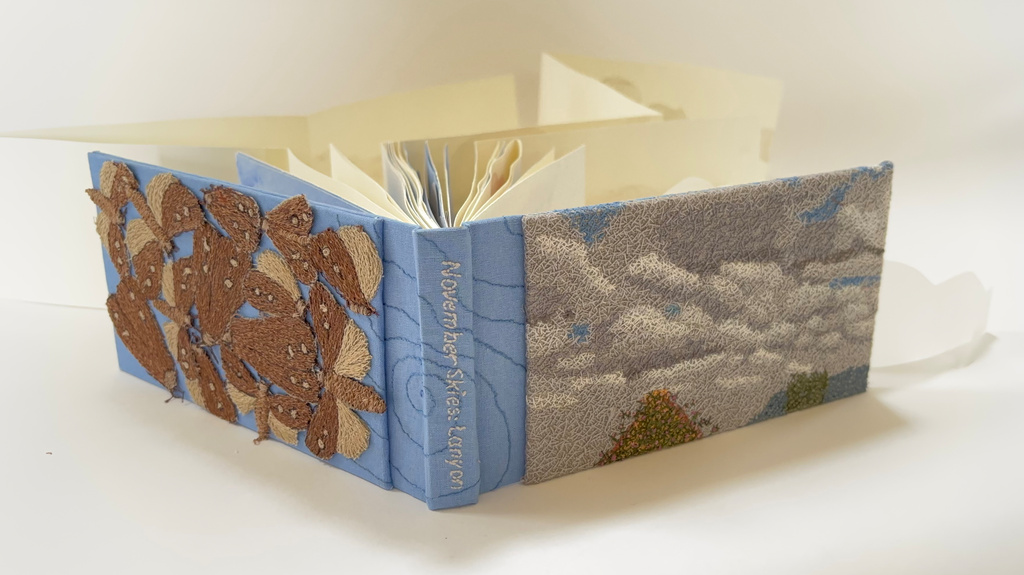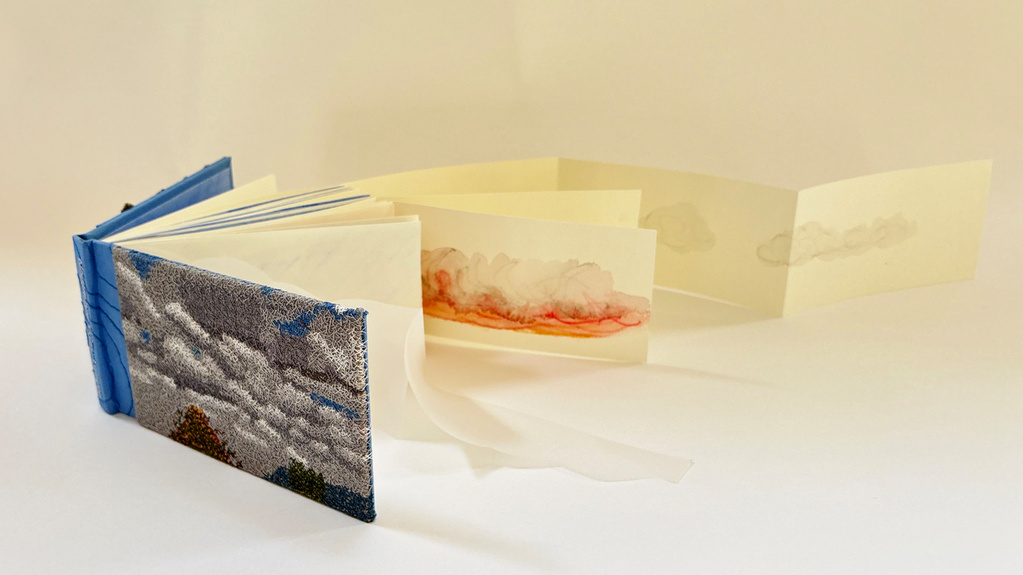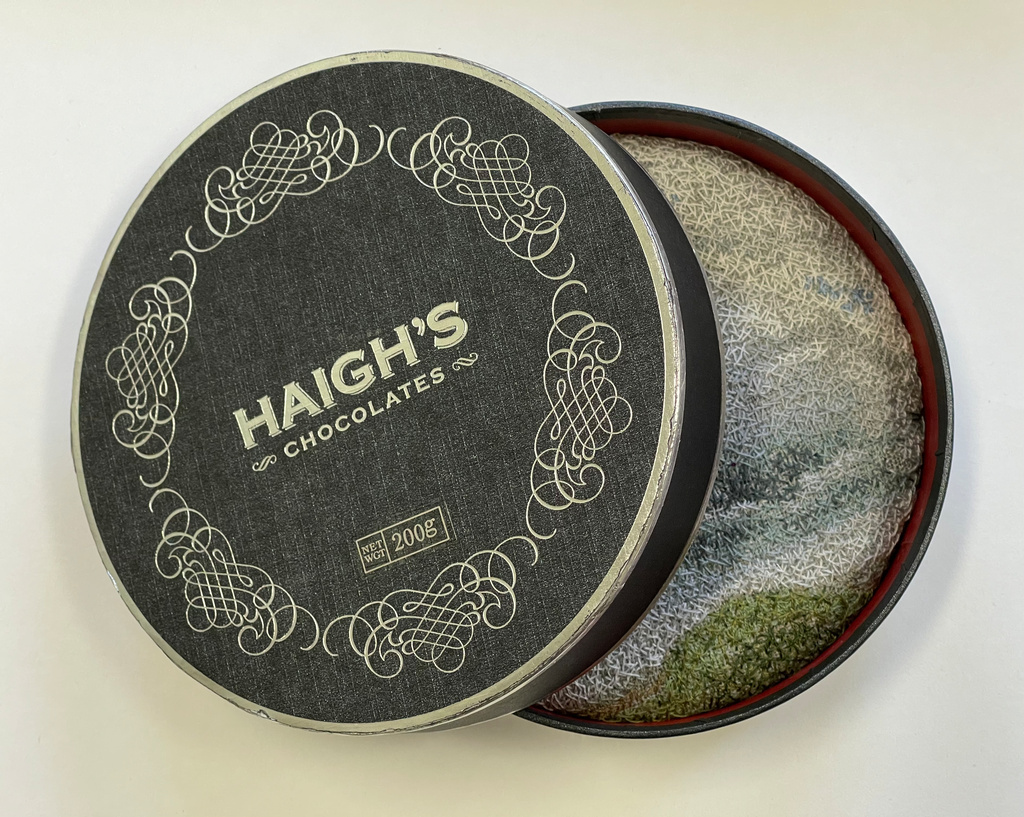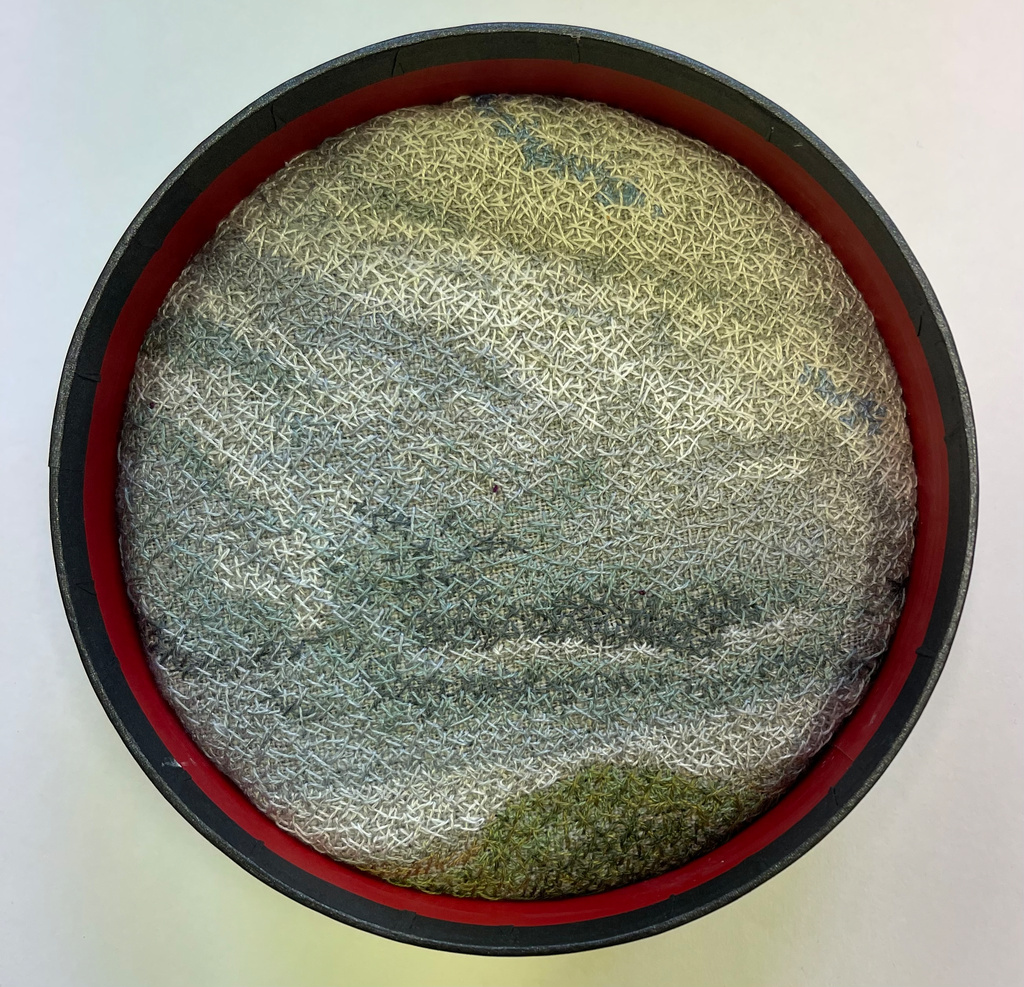- Sharon Peoples, There is Another Sky
- Sharon Peoples, Under Another Sky Front Cover
- Sharon Peoples, Under Another Sky
- Sharon Peoples There is Another Sky
Sharon Peoples set out to embroider the sky, which she ended up stitching into hand-bound books.
In 2023, while on an artist residency at Mount Wilson in the Blue Mountains, west of Sydney, the ambition of making a large image of the vast landscape below, was curtailed by inexperience. Setting up for a day’s work with large sheets of paper, watercolour, and pencils felt inadequate as I tried to capture the land. As an embroiderer, working on such a scale was not impossible but unusual. Unwilling to abandon the site after a long walk, I looked to the sky. Full, voluminous clouds were forming. The pencils captured the formations in a small sketchbook.
Residencies are opportunities to gather resources for the months and years ahead. Long hours of stitching seem wasteful. However, that evening, bitterly disappointed, I consoled myself by hand-stitching the clouds.
Random cross-stitch is a technique I’ve developed and a way of getting thread colours to mix. Embroiderers rely not only on the limited colours provided by manufacturers of thread, but also on which colours the retailers anticipate will sell. Rather than having blobs of paint to mash on a palette before applying to a surface, coloured threads are directly worked on cloth. The eye does the work of mixing colours. Random cross-stitch facilitates such optics.
Although it was the peak of summer in February, in the mountains, the sky often came to rest on the landscape.
Throughout the residency, the sky determined the activities of the day. Although it was the peak of summer in February, in the mountains, the sky often came to rest on the landscape. The fog often meant a late start to long daily walks for gathering photographs, objects and images.
My intention for the residency was to work with bird sound: making the audible visible. In the fog, bird sounds were heightened. A male whip bird called, with the female responding instantaneously, as though to say, “I’m over here now”.
Learning birdcall is as important as visual recognition when birding. Most field guides suggest spending twenty minutes or so sitting quietly in a chosen location for birdwatching, listening and observing.
The air carries both sound and bird. As you might imagine, there is difficulty in stitching sound. Despite this, I stitched the sky while waiting to solve these difficulties.
At Mount Wilson, I began making hard-covered books. I taught myself as a child to sew a few pages together to make books that I wrote. My source of learning was Handwork for Schools by WR Dean and H Jolly (1948). This book belonged to my father, and his own handwritten recipes for papier maché and making shellac embellish the endpapers inside the covers. Seeing his handwriting always pulls at the heartstrings. He passed away when I was twelve. It is the one object belonging to him that I own.
During Covid lockdowns, I took an online course in bookbinding. Realising there were subtleties not conveyed through online learning, as soon as practical, I joined the local bookbinders’ guild.
I fell in with this new making tribe with ease, as the commonality with embroidery was stitch. Most bookbinders are familiar with stitching, whether it is basting a simple pamphlet binding or unobtrusively sewing signatures sturdily and precisely together to make a book block. Using buttonhole stitch to make headbands, those little coloured caterpillars that run across the top and base of the spine, which reinforce and provide additional support to the book, also involves working with needles and threads.
I was surprised to find some international artists who stitched book covers, often elaborately: my kind of embroidery.
My intention in joining the bookbinders’ guild had nothing to do with embroidering books, but to understand the making of books. However, in a workshop to make bookcloth, the fabric for hardback books, I soon realised that I could embroider linen before preparing it as bookcloth. I was surprised to find some international artists who stitched book covers, often elaborately: my kind of embroidery.
Further research led me to discover that the Man Booker Prize commissions designer bookbinders to hand-bind copies of the finalists’ works. This astounded me as embroiderers who stitched covers were included. In working with Aldo Giurgola, the architect of the new Parliament House in Canberra, I learned about the German ideal of Gesamtkunstwerk, the total work of art. My commission in 2003 was to embroider the religious vestments for the new Saint Patrick’s Cathedral in Parramatta, Sydney. The cathedral and all objects used within it were considered as a total work of art. Giurgola had oversight of and input to everything, including the vestments. Gesamtkunstwerk has stayed with me since. The Man Booker commissions are a total works of art: the external reflecting the internal of the book, the same as medieval embroidered books.
I have taken this approach to my book-making. When making “There Is Another Sky”, my artist daughter in New Zealand came to mind. I think of her as I watch the sky outside my studio windows, and wonder if cloud bands moving east will reach her. The title comes from a poem by Emily Dickinson. Making a book felt like a good fit. In misremembering this title while searching for the full poem, I found a poem, “Under Another Sky” by R. Parthasarathy, a very different sentiment, but nonetheless appropriate for another cloud book.
- Sharon Peoples Novermber Skies Lanyon entire
- Sharon Peoples November Skies Lanyon opened book
For my book “November Skies: Lanyon”, I spent four days watching the weather as it moved across a local heritage property, Lanyon. In this narrative-driven book, the pages are cut, drawn and painted with images of the skies. The front cover is stitched with parts of the Lanyon buildings. The back cover is embroidered with Bogong moths, which flew in their thousands during November from Queensland to the Australian Alps to estivate. Sadly, their numbers have declined by over 90%.
One can never know how the resources gathered on a residency will be used. I continually find new techniques, perfect and apply them to emerging concepts, but this time I have really fallen in love with book binding. I often wonder what could have been had I looked at the sky earlier. Have I left my run too late? Or is it another sky forming?
- Sharon Poeples, Wynes Rocks with lid
- Sharon Peoples, Wynnes Rocks
About Sharon Peoples
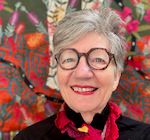 I have lived in Canberra for forty years, most of that time working as an artist with a short stint as an academic. I am currently working on stitching bird related objects for an exhibition on King Island in the middle of Bass Strait where I did a residency last year. Visit sharon-peoples.com and follow @sharonpeoplesstudio.
I have lived in Canberra for forty years, most of that time working as an artist with a short stint as an academic. I am currently working on stitching bird related objects for an exhibition on King Island in the middle of Bass Strait where I did a residency last year. Visit sharon-peoples.com and follow @sharonpeoplesstudio.

